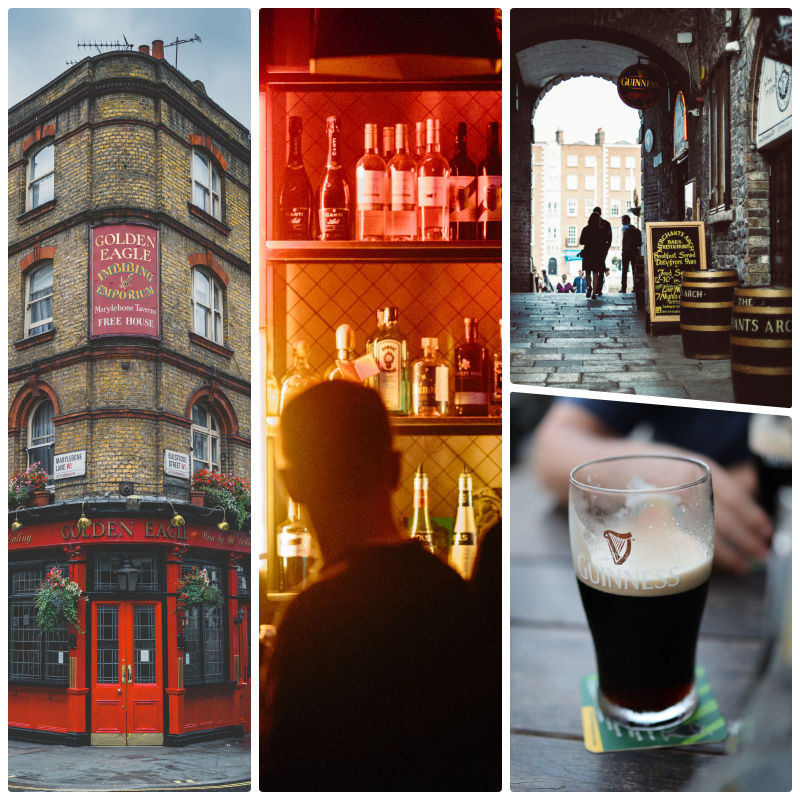The Art of Kaffee und Kuchen
When faced with insurmountable odds, when the chips are down, and all hope is lost, humans will often react in strange ways. Some panic, others rage, but in Britain we make “a nice cup of tea”. The British, over centuries, replaced real emotions with drinking tea. In pain? Make a brew. Feeling happy? Put the kettle on. Lost for words? Get the tea bags. I’m no pessimist, but when England inevitably exit the World Cup in Russia, via the medium of gut wrenching penalties, I will stand up, a single tear rolling down my cheek and switch on the kettle.
The British are well known for keeping their emotions in check, with two exceptions; when we’re drunk or when some idiot makes tea the wrong way. Give us a few beers, a couple of shorts and a round of shots and we’ll spray uncontrolled emotions in a similar fashion to the projectile vomit that usually follows such a session. Make a bad cup of tea and the mild-mannered British will flay you alive, use your skin as fancy new jacket and then go around your mum’s house to make an official complaint about her parenting skills.
A good cup of tea is an art form and despite its critics, the British still love it. The haute couture of tea making can be found in famous establishments, such as Betty’s Tea Room, where the humble cuppa is elevated to the ritual status of Afternoon Tea. Although such institutions are more commonly populated by tourists, they still observe the arcane etiquette of drinking tea from cup and saucer, eating scones lathered in jam and enjoying triangular sandwiches. Why triangles you may ask? I have no idea.
When I ask Germans about afternoon tea, they will inform me that it is the most British of customs, that it is taken at 4 o’clock and that every British person does it. In the UK, I am told, the world stops for tea. This is essentially true, the British will happily stop for tea, but we don’t need to wait till 4pm. I’ve worked in places that paused every hour for a cup of tea. What’s more, we also use tea to structure our hierarchies; the youngest employee makes the tea in the office, the youngest child is pressured by their siblings into making the tea and there is no surer sign of success in life than being invited to have tea with the queen.
Yet, for all their understanding of British tea habits, the Germans often deny that Germanic culture has any comparison. This surprises me, given the importance that Kaffee und Kuchen has for many Germans. It may function in a slightly different way and it doesn’t always carry the hierarchical social structure that tea has for the British, but in many ways, the ritual of Kaffee and Kuchen is equally important.
I have been ceremoniously invited to German homes to enjoy Kaffee und Kuchen, I have seen weddings stop to supply guests with both and I have walked by many cafés in Germany at exactly 3pm and found young and old enjoying a slab of cake and dirty great cup of the black stuff. To be invited to a home for the most German of rituals is a clear sign of social acceptance and once shared a person will have a friend for life, while family celebrations would be considered flawed without someone producing a homemade cake.
Of course, coffee and cake perform slightly different functions than tea in the UK. For one, Kaffee und Kuchen is the time to share gossip, or kaffeeklatsch, among friends. In the UK, gossip is a universal event, to be performed over any beverage available. The women of Sex and City may have enjoyed Cosmopolitans when the waxed lyrical about their exploits, but a German remake would certainly feature more Käsesahnetorte.
This brings us to the next divergence from the tea culture of the UK, the fact that Germans rarely skimp on the cake part of the equation. The UK may have the nice crockery and the tiered cake stands packed with tiny little fondants, but Germany has opted for size. Cake in Germany is no laughing matter. It comes in literal slabs, with no exceptions for diet or sugar tolerance. Not only are the portion sizes practically American, but the range of cakes is mind boggling.
Many people will know of the Black Forest Gateaux (Schwarzwaldtorte) but many may not know of the Nussschnecken, the Zwetschkenstreuselkuchen, the Schokoladen-Mandelstriezel, the Mohnkranz or the Königinnen Kuchen. Ask a German about cheesecake and you will receive a detailed explanation of the difference between KäseKuchen, Käsesahnetorte and Frischkäsetorte. I once made the mistake of telling a group of colleagues, in my typical non-specific way, that they were all basically the same. That was seven years ago, they still bring it up.
Germany is known for exporting many things, but one thing they have routinely refused to offer to other countries is the wonder that is the Bienenstich. This, in my opinion, is the true genius of German cake making. Although it is laborious and tricky to get right, it is one of the finest feats of culinary excellence. It may reduce your life expectancy by a decade, but it is worth every artery clogging bite. If I must leave this mortal coil, I want it to be at a ripe old age, forcing another piece of Bienenstich down my gullet.
Kaffee und Kuchen is a bridge from afternoon to evening, it is a chance to celebrate or to gossip among friends. It has some ritual, but it doesn’t require a library of etiquette. It can be enjoyed by young and old, rich or poor. When all is said and done, I will still reach for the kettle in times of high emotion. It’s the way I was programmed. However, at the back of my brain I will be thinking of Kaffe und Kuchen.










